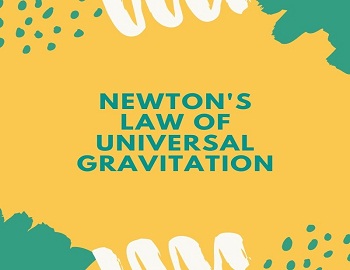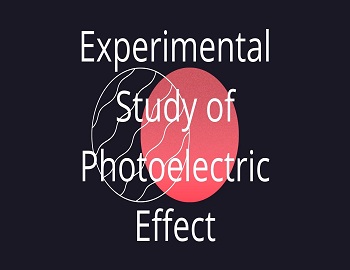Newton’s Law of Universal Gravitation:
From astronomical calculations based on Kepler Laws, Newton came to the conclusion that the force which retained a planet in its orbit around the sun is a force of attraction between the sun and the planet and that the magnitude of this force varies inversely as the square of the distance between the two.
About the year 1665, at the early age of 23 years while sitting in a garden Newton saw an apple that fell from a tree. The question which then occurred to him was, why should an apple fall towards the earth? There must then exist some attractive force between the earth and material body. Is the force of attraction between an apple and the earth of the same kind that is responsible for the motion of heavenly bodies? Newton considered these questions critically and in 1666 synthesized in one theory the previously separated. Sciences of terrestrial mechanics and celestial mechanics by propounding the universal law of gravitation which states that-
| Every body in this universe attracts every other body with a force that is directly proportional to the product of their masses and is inversely proportional to the square of the distance between them. |
The direction of this force is along the line joining the two bodies. For the two bodies of masses, m1 and m2 separated by a distance r,
| F ∝ m1m2/r2 F = G m1m2/r2 …………….(1) |
The constant G is called the universal constant of gravitation and was determined by Cavendish for the first time by using torsion balance in 1736 and later in 1930 more accurately by Heyl. The value of a gravitational constant is 6.673 x 10-11 Nm2/Kg2 as reported by Gundlach and Merkowitz in 2000. The dimensional formula for G can be easily obtained by putting the dimensions of F, m and r in equation (1) i.e.
| [MLT-2] = G [M][M]/[L2] ∴ Dimensional formula of G is [M-1L3T-2] |
The Gravitational constant G defines the strength of the gravitational force of attraction between two bodies. It is the same everywhere irrespective of position in space and time.
Equation (1) represents the force between two point masses. In the case of a spherical body, its total mass can be supposed to be concentrated at its centre and can thus, be treated as point-mass with the whole mass at its centre. For bodies of other shapes, equation (1) cannot be used directly as in that case the distribution of mass needs to be considered.
Regarding gravitational force, it is worth noting that-
(a) Unlike the electric and magnetic forces, the gravitational force is always attractive and is independent of the medium between the masses.
(b) It has been found applicable over a wide range of distances (from interatomic to inter-planetary distances).
(c) It acts as action-reaction pair, i.e., the force exerted by one mass on the other is equal and opposite to the force exerted by the other mass on the first.
(d) The force is a conservative force, i.e., the work done in taking a body from one point to the other in a gravitational field is independent of the path followed and depends only on the initial and final positions.
(e) It is a two-body interaction i.e. the gravitational force between two bodies is not affected by the presence of a third body. So, if there are several bodies then the resultant gravitational force acting on a given body can be found by the vector sum of forces due to each particle on it.
Evidences in Support of Newton’s Law of Gravitation:
(a) The rotation of the earth around the sun or the moon around the earth is explained on the basis of this law.
(b) The formation of tides in the oceans is due to the force of attraction between the moon and ocean water.
(c) The prediction about solar and lunar eclipses, made on the basis of this law, always came out to be true.
(d) The predictions about the orbits and time periods of the modern artificial satellites made on the basis of this law are found to be very accurate.









Comments (No)